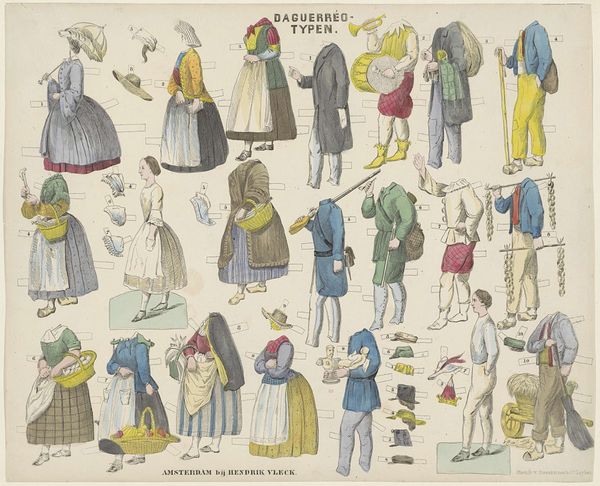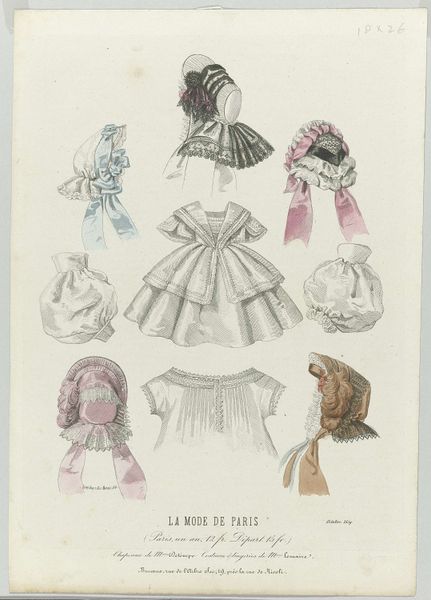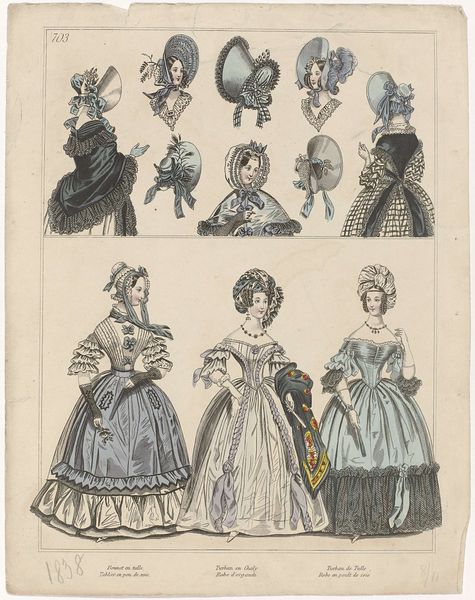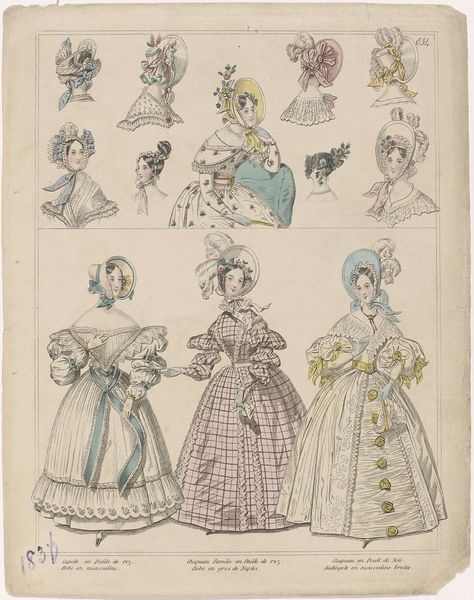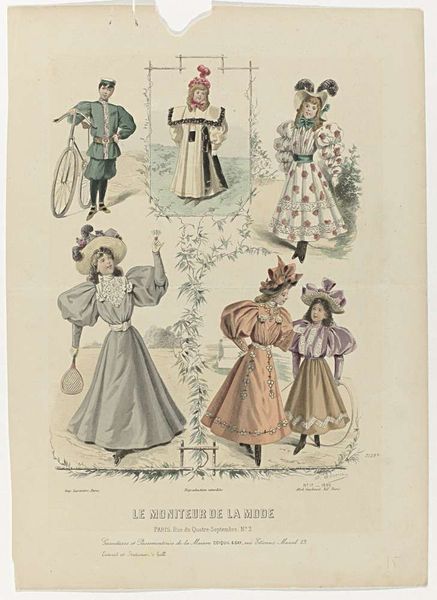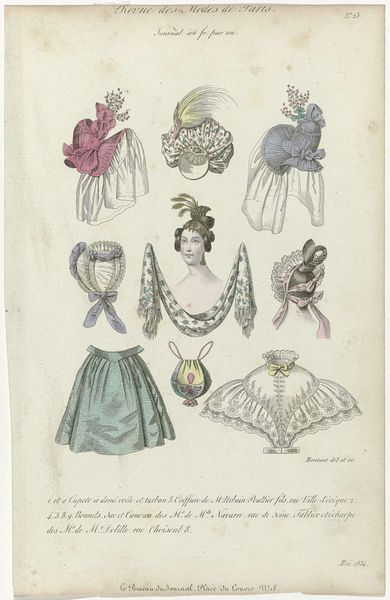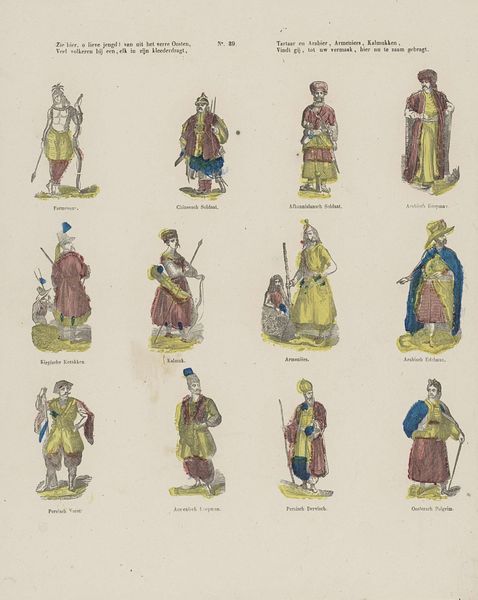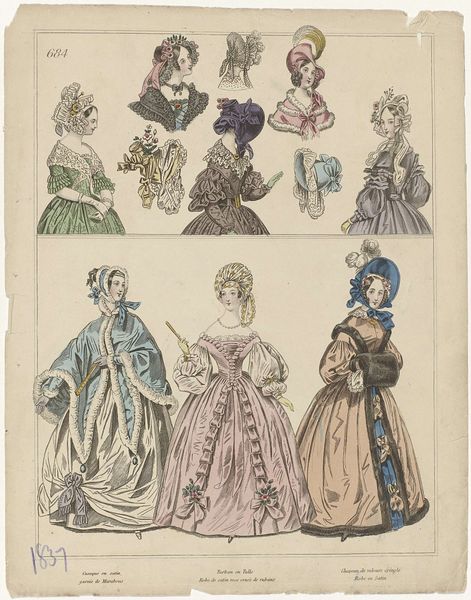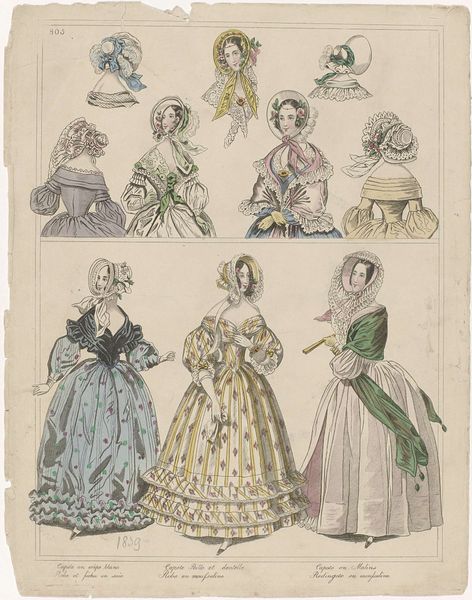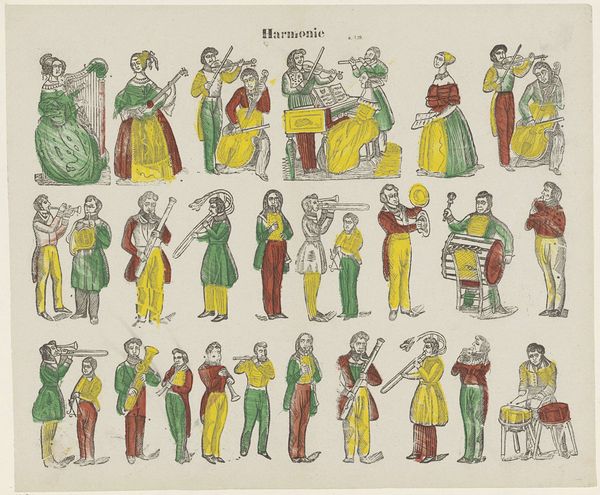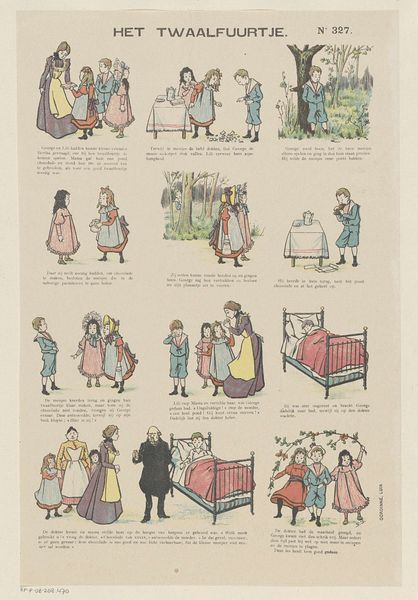
drawing, graphic-art, print, textile, paper
#
portrait
#
drawing
#
graphic-art
# print
#
textile
#
paper
#
historical fashion
#
genre-painting
#
textile design
#
fashion sketch
#
clothing design
Dimensions: height 343 mm, width 425 mm
Copyright: Rijks Museum: Open Domain
Editor: So, this charming print, "Daguer- / r\u00e9o- / typen. / No 2." from somewhere between 1861 and 1865, by Hendrik Vleck. It’s housed here at the Rijksmuseum. It reminds me of paper dolls, a playful way to explore different social roles and clothing. What's your take on it? Curator: It's interesting that you see it as playful. As a historian, I look at the way prints like these served as vital documents of social status during this period. Notice how each figure, through its clothing, alludes to a very specific place within Dutch society. Can you see how the artist is codifying identity through fashion? Editor: I can see that, now that you point it out. It’s like a visual encyclopedia of the time! There are clearly different classes represented here. Is there a political agenda behind the choice of including all these professions? Curator: Indeed. Think about the rise of the middle class and how prints like these served to solidify and communicate those hierarchies, demonstrating, in a visually accessible way, who was who and, perhaps, who aspired to be whom. The medium itself, as a print, allowed for wide circulation, standardizing and reinforcing those social codes. Do you think it was innocent fun for kids as you stated earlier? Editor: I'm beginning to see how naive my first impression was! It's not *just* paper dolls; it’s a window into how 19th-century Dutch society was organized and perceived. Thanks, I never thought of paper dolls having a political charge. Curator: Precisely! This reveals the critical and public role art held as a social narrator and an indicator of its ever evolving landscape.
Comments
No comments
Be the first to comment and join the conversation on the ultimate creative platform.
